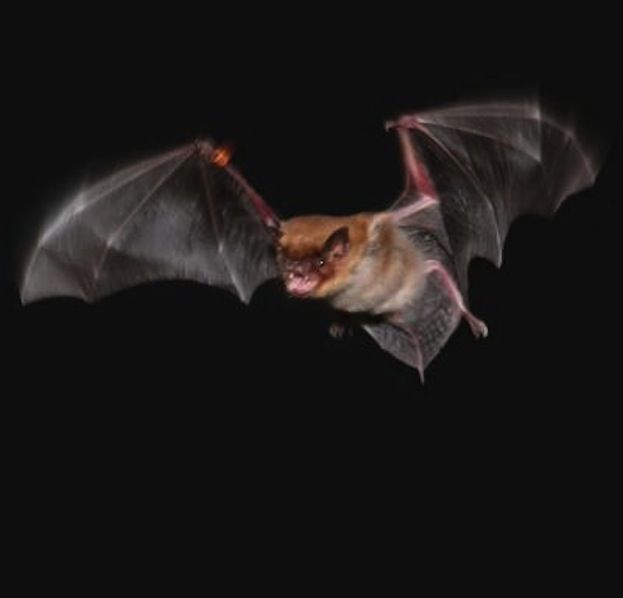The Squeaky Bat Gets the Worm

Bats don't just use supersonic sounds to navigate — they also send out the high-pitched squeaks to warn other bats to "back off."
The flying critters are known to navigate by bouncing supersonic sounds off objects in their environment and listening to the echoes returning, a process known as echolocation. But this is the first time bats have been known to use these sounds to tell other bats to stay away from their prey, researchers say.
"Despite decades of study, many things about common bat behaviors such as foraging remain mysterious," Genevieve Spanjer Wright, a biologist at the University of Maryland and leader of the study detailed in the March 31 issue of the journal Current Biology, said in a statement. [Flying Mammals: Gallery of Spooky Bats]
Wright and her colleagues analyzed audio recordings of two bats flying and foraging in tandem, and noticed the calls seemed different from ordinary echolocation. They looked deeper into video and audio recordings of the brown bats' flight paths and calls, as the bats foraged for food (tethered mealworms) in pairs or alone.
They found that male brown bats produced a sound known as a frequency modulated bout, or FMB, when hunting in pairs. Each bat emits a unique call consisting of a sequence of three to four sounds, longer lasting and lower pitched than typical echolocation (but still too high a pitch for human ears). The calls are often followed by buzzlike calls.
"We were able to study a social call that is likely occurring thousands of times a night all over North America during the summer months, yet had not been described or studied before now," Wright said.
When one bats heard another bat's warning calls, it moved away from the caller and the prey, suggesting these calls may be the bats' way of claiming the food for themselves. Bats that produced the most FMBs were more likely to capture the worm, the researchers said.
Sign up for the Live Science daily newsletter now
Get the world’s most fascinating discoveries delivered straight to your inbox.
While some animals use calls to attract others of their kind to a food source, the bat calls do the opposite, repelling other bats.
Only male bats produced the warning calls, possibly because females form close bonds with roost mates and forage with them, whereas males often roost alone or in small colonies of bachelors, and thus don't know their fellow foragers.
Follow Tanya Lewis on Twitter and Google+. Follow us @livescience, Facebook & Google+. Original article on Live Science.












